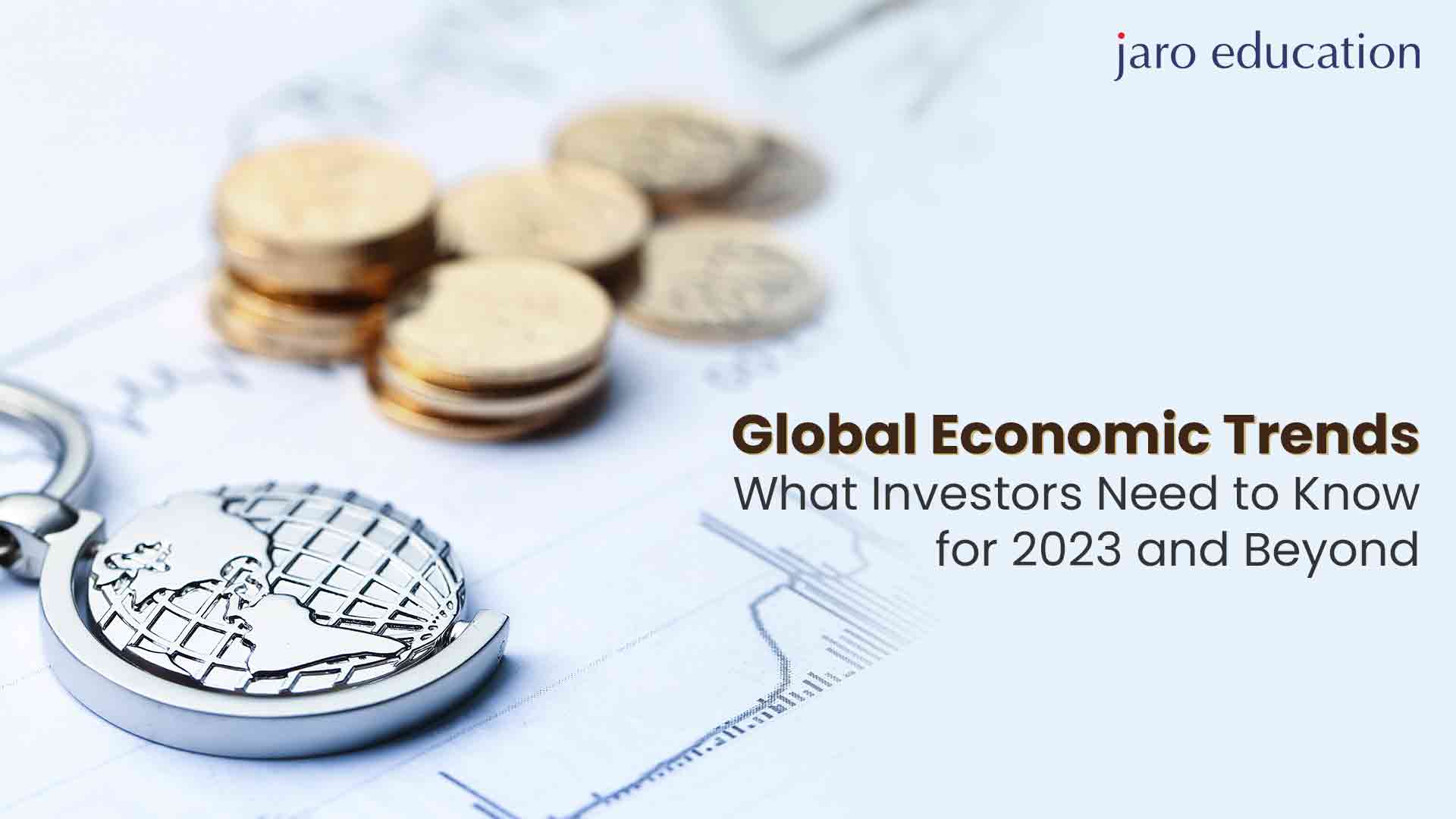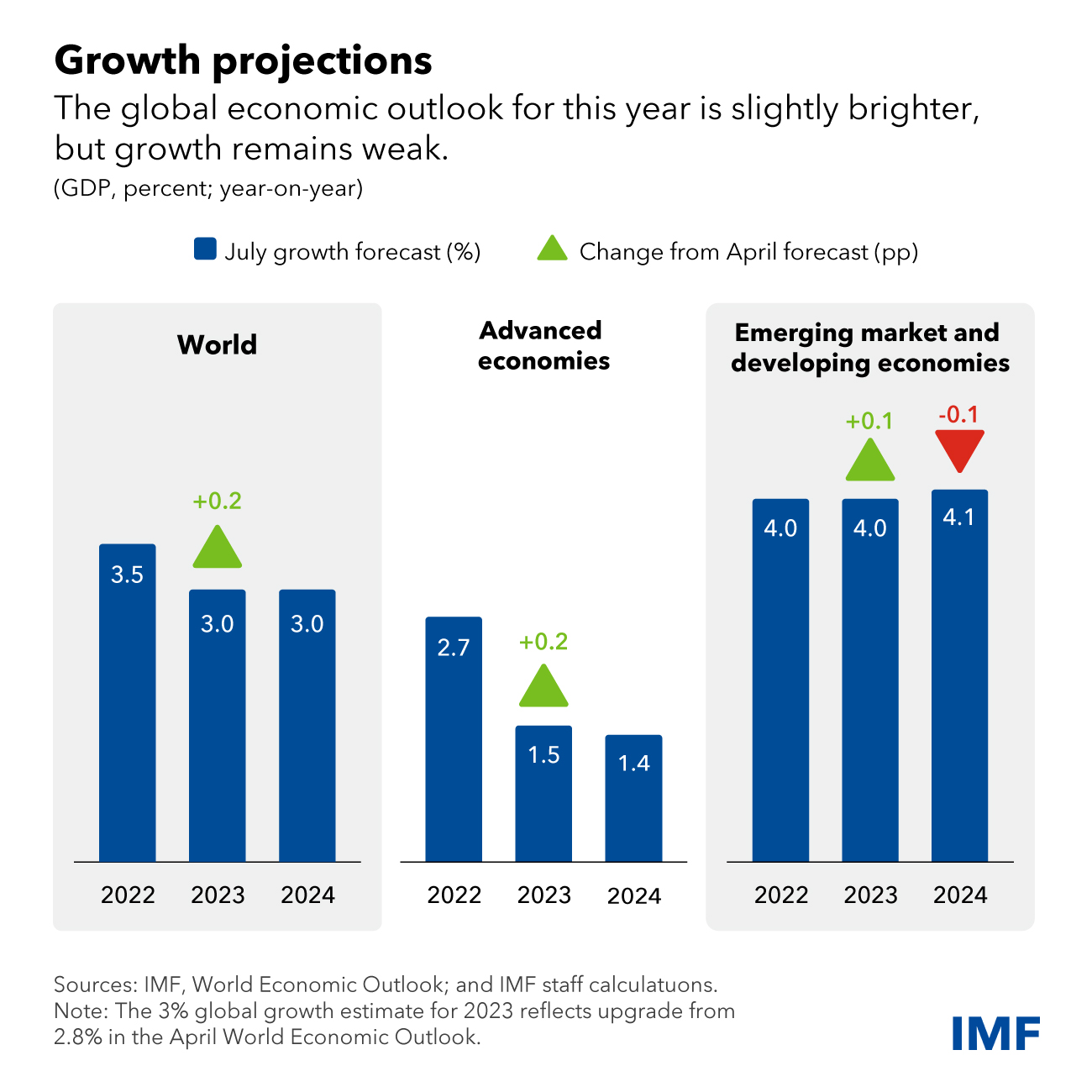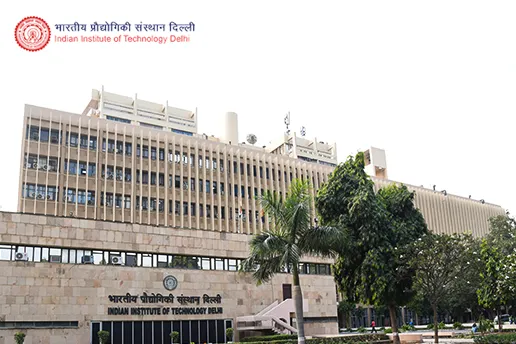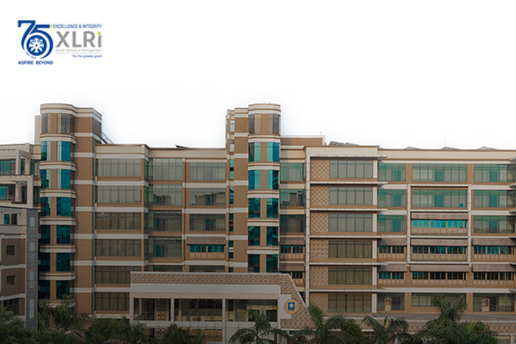
- jaro education
- 4, February 2024
- 11:00 am
The global economy is experiencing a noteworthy transformation as it rebounds from the unprecedented shock of the COVID-19 pandemic. The trajectory and form of the recovery hold promise and will be shaped by various factors, including the effectiveness of vaccination campaigns, the evolution of virus variants, the policy responses of governments and central banks, and the structural changes in consumer and business behaviour.
As an investor, you should know the fundamental economic trends that will shape the global landscape in 2024 and beyond, as these trends will significantly affect your portfolio allocation, risk management, and investment opportunities.
What is the Global Economy?
The global economy refers to the system encompassing all the activities within and between nations, including production, consumption, economic management, work, financial transactions and trade of goods and services.
Table of Contents
There are ways to measure the economy, such as by looking at all countries’ total gross domestic product (GDP) or comparing different currencies using purchasing power parity (PPP). Factors like globalisation, technological advancements, demographic changes, environmental concerns and geopolitical events also impact the economy.
Global economy flourishes as a result of globalisation. It is the process that fosters interdependence and integration among countries, regions and people through trade, investment, migration, communication, and cultural exchange. It has brought economic benefits, including increased growth rates, reduced poverty levels, improved efficiency, and enhanced innovation. However, alongside its benefits come challenges such as inequality, instability, vulnerability, and environmental degradation.
What are the Economic Trends in India?
India stands among the world’s fastest-growing economies, boasting an impressive GDP growth rate of 7.3% in 2023-24. It claims to be one of the largest and most diverse consumer markets globally, with a population of 1.4 billion and a burgeoning middle class. Over the next decade, India’s economy is projected to undergo significant transformations driven by various emerging trends:
Digital transformation
India is set to witness a revolution with over a billion people expected to be connected to the internet by 2030. This will position India as one of the world’s markets, opening up abundant opportunities in areas like information access, education, healthcare, entertainment and financial services for millions of Indians. Moreover, this digital wave will pave the way for business models and entrepreneurial ventures.
Consumption upgrade
The rise of the class in India is another aspect of this transformation. By 2030 it is projected that 80% of households will belong to the class driving 75% of consumer spending. With increased prosperity comes an inclination towards investing in high-quality products and services that cater to various preferences and needs. Consequently, consumption patterns will shift from items to goods and from mass-market offerings to premium segments. Furthermore, offline shopping experiences will give way to channels as technology continues its advancement.
Urbanisation
Urbanisation is also on the horizon for India’s future. By 2030, we can expect an influx of around 200 million people into various fields. The growing urban population will demand housing options along with infrastructure facilities like transportation systems and energy supply networks. Additionally, public services such as waste management need consideration amidst this urban expansion. Though urbanisation brings employment prospects for migrants and boosts income sources, overall issues like congestion and pollution require solutions.
Sustainability
India’s economic growth must balance sustainability and its environmental and societal impact. Being highly vulnerable to climate change, India faces rising temperatures, extreme weather events, water scarcity, food insecurity and health hazards. Additionally, addressing issues such as poverty, inequality, gender disparity, and human development is crucial for India. To enhance resilience and competitiveness, India should adopt inclusive policies and practices.
Infrastructure development
India will heavily invest in developing and upgrading its digital infrastructure to support its growth and social well-being. The Union Budget for FY23 focuses on infrastructure creation, with a capital expenditure 35.4% higher than the previous year. Furthermore, the government is keen on promoting partnerships (PPP) in infrastructure development through policy initiatives. It aims to invest USD 1.4 trillion in infrastructure projects by 2025 under the National Infrastructure Pipeline (NIP).
Innovation and entrepreneurship
In the next few decades, India is poised to become a global hub of innovation and entrepreneurship. With over 50,000 registered startups as of December 2020, it ranks worldwide regarding startup activity. India also boasts a network of incubators, accelerators, investors, mentors and universities that foster innovation and entrepreneurship. India plans to capitalise on its expertise in information technology, biotechnology, pharmaceuticals, renewable energy, space technology and defence technology.
Global integration
By focusing on aspects such as trade, investment, migration and collaboration, India plans to enhance its engagement with the economy. The country aims to prioritise its interests and partnerships both within the region and globally. Key partners of India include the United States, Japan, Australia and the Association of Southeast Asian Nations (ASEAN). Additionally, India will actively participate in platforms like the United Nations, World Trade Organization (WTO) G20 and International Solar Alliance.
Demographic dividend
India aims to leverage its dividend. A term used to describe the economic growth that arises from having a large population of young working-age individuals. With a population of 1.4 billion people, 65% are below the age of 35. By 2027, India is projected to have the world’s largest workforce, surpassing China. To fully capitalise on this advantage, India intends to invest in education, healthcare services, and skill development programs to create more employment opportunities. This will help harness their human capital potential, improving productivity and enhancing competitiveness.
Financial inclusion
India has made advancements in promoting inclusion over the past few years. One of the initiatives called Pradhan Mantri Jan Dhan Yojana (PMJDY) has successfully facilitated the opening of over 430 million bank accounts for households with incomes. Furthermore, India intends to utilise its infrastructure, including Aadhaar (an identification system), UPI (a unified payment interface) and e-KYC (electronic know your customer) to enable a broader range of digital transactions and financial products.
Social sector development
India plans to focus on improving its social sector development, which includes initiatives to enhance health, education, gender equality and social protection. Recent efforts, like Ayushman Bharat (a health insurance scheme), Beti Bachao Beti Padhao (a campaign for empowering girl children) and Swachh Bharat (a cleanliness drive) have shown progress in this area. However, India still has room for improvement in its human development index (HDI) compared to other countries. To address this, India aims to increase spending and enhance the quality of services in the sector.
Manufacturing revival
Another priority for our nation is the revival of our manufacturing sector, which currently contributes around 15% to the GDP. As part of the Make in India initiative, India aims to boost manufacturing share to 25% by 2025. Key sectors such as electronics, pharmaceuticals, textiles, automobiles and defence will receive attention to promote self-reliance and competitiveness. Attracting direct investment (FDI) and fostering global value chains (GVCs) are also important goals within the manufacturing sector.
These are some of the economic trends in India that will shape India’s economy beyond 2024. These emerging patterns present prospects and obstacles for investors seeking to capitalise on India’s potential and varied landscape. Investors must thus comprehend these trends and their consequences across market sectors and segments.

*imf.org
The Future of the Global Economy
The outlook for the world economy remains uncertain, contingent upon factors including the progression of the governmental and central bank responses and shifts in consumer and business behaviour. However, long-term trends such as globalisation, technological advancements, demographic changes and geopolitical events also play a role in shaping the future of the economy. These trends will present both opportunities and challenges beyond 2024. The global economy must adapt to these developments. Navigate their impact on growth, inflation, trade, investment, migration, cooperation and stability.
Conclusion
Exploring Google’s Economic Trends for Investors in 2024 reveals a changing global landscape. To make savvy investment choices amid post-pandemic recovery, understanding key factors is essential. The blog intricately explores India’s growth narrative, highlighting digital transformation, urbanization, sustainability, and innovation as key drivers. Amid uncertainties tied to government responses and global shifts, seizing emerging trends becomes paramount for investors. Successfully navigating these evolving economic currents requires staying informed, ensuring the ability to capitalize on trends strategically.
If you’re interested in understanding more about the economy or expanding your knowledge in this field, consider an Online MBA Programme offered by Manipal University Jaipur. This course provides practical insights into aspects of management and leadership. It enables you to develop your skills across finance, marketing, human resources operations, and business analytics domains. You’ll also benefit from flexible learning options that suit your schedule convenience, such as dual certification opportunities, placement assistance, and networking with alumni industry experts. This course will prepare you for future challenges and opportunities in the global economy.









